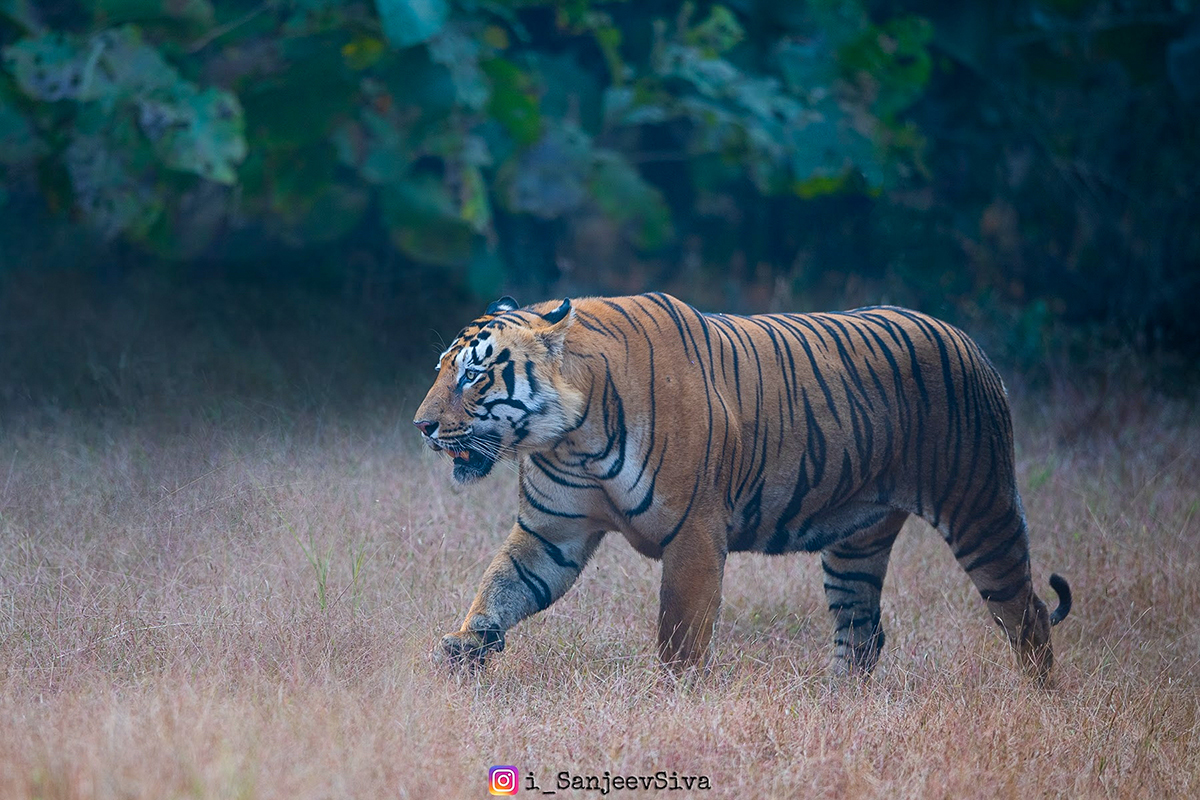The Order of the Kings
It's the eye of the tiger, it's the thrill of the fight;
Rising up to the challenge of our rival.
~ Survivor.
In the heart of the Gondwana lies one of the magnificent cradles of tiger civilization - Tadoba. Gondwana translates to Forest of the Gonds; Gonds being the aboriginals inhabiting these forests. In fact, the name of the supercontinent, Gondwana Land, that existed more than 550 mya (million years ago) was derived from Gondwana.
Dominated by the dense clumps of Bamboo, Teakwood, Crocodile Bark (ain) and Coromandel Ebony (tendu) trees, interspersed with Vetiver (khus) grasses, the vegetation of Tadoba is of a diverse blend of tropical and subtropical dry-broadleaf and dry-deciduous trees and thus a motley mix of charms even in the driest of the seasons.
Behind the glitz and the glamour is an unsettling bloodbath, a chaos, not just between the tigers, but between humans and the animal as well. These forests have been home to some of the biggest tigers, the largest number of tigers born every year and also the highest number of human-tiger conflicts.
Because prime territories are encircled by many ranges, each with its unique habitat that supports a different prey-base on which tigers subsist, and only the best of the tigers ruling these territories passing on the best of the genes, a fabulous natural selection is always happening at Tadoba.
In most parts of India, spotted deer and sambar deer are the most preferred prey. The spotted deer top at 60-70 kgs and the sambar deer at 300-400 kgs; thus, a sambar deer can last for a longer time and is usually the choicest by tigresses having cubs or even males. The lesser a tiger hunts, the lesser will be its Daily Energy Expenditure (DEE); genetics apart, DEE plays a good role in determining the size of the tiger.
But these deer prefer grasslands than thicker forests, which are generally absent in a forest like Tadoba. On the south-eastern part of Tadoba lies the Kolsa range, where tigresses, that generally weigh around 120-140 Kgs, have adapted to hunt the formidable Indian Gaur. A gaur could weigh upto 1500 kgs and can last, even for a family of five, for many days.
Hailing from this fabled range, two brothers have made their way to the prey-rich Northern part of Tadoba. Born in 2016 to a tigress known as Shivanjari (T-6) and fathered by Kakarghat male (T-36), Tala (T-100) and Rudra (T-103) were a part of a litter of 1 female and 3 male cubs.
The Moharli range just a little north-east of Kolsa range was controlled by Bajrang while the Tadoba range further North of Moharli and Kolsa was controlled by Matkasur; both ruling the respective territories for more than 4 years.
A longer rule by a dominant male creates an order in that territory, enabling the females to successfully raise the cubs to subadulthood and reducing infant mortality. With a change in the order, chaos creeps but not long before a newer order is established.
Matkasur ruled a major portion of Tadoba range, a territory he claimed from Katezhari male and Saturn male many years ago and had successfully defended his territory from Gabbar, and other ageing males such as Kali and Narasimha.
Bajrang ruled a major chunk of Moharli and even Kolara ranges, taking over the territory from the mighty Waghdoh. Bajrang ruled an excessively big territory mating with around a dozen tigresses and at one point of time having 8 females under his dominion.

The first to disrupt the order of Matkasur-Bajrang duo was Rudra. He arrived in late 2019 and has been constantly at war with Matkasur, beating Matkasur badly, while injuring himself. Matkasur would find recluse in the fringes of his territory, recuperating, and returning to engage in further skirmishes with Rudra.
It wasn’t until the arrival of Tala that things changed forever. Tala who made inroads to Moharli range later than Rudra, launched a conquest against the mighty Bajrang. Both had a skirmish at Telia lake, where Tala was defeated by the veteran Bajrang. This forced Tala to move northwards to Tadoba range where he started to challenge Matkasur.
Systematically, both the brothers, Tala and Rudra started to push Matkasur out of his territory. Two young males were too much for the ageing Matkasur, who had to finally forgo of his territory. The fight now was reduced to the brothers and the son of Matkasur, Chota Matka, who was nearly of the same age as the brothers. Chota Matka was also seen with injuries and was seemingly pushed further north (into the fringes and buffer), where he established his own order (territory).
After eliminating the competition, effectively, the brothers turned against one another. In December 2019, both confronted with one another. Rudra was asserting his dominance in one of the fights that he even managed to steal the dominant female of the territory, Maya, from Tala. With time, it seems that the brothers have managed to maintain truce, by sharing the vast territory of Tadoba between them; a territory that was once ruled in its entirety by Matkasur.
Maya, who seemingly had cubs from Matkasur is avoiding any confrontation with Tala (to save her cubs). Matkasur, in the meanwhile has been exiled and is living along the boundaries of his erstwhile dominion.
Bajrang, who thwarted the initial attempts of the hostile takeover, now faces a new challenge from a younger male from the adjoining buffer areas. In a recent squabble, he managed to injure the male, but it is still to be seen, if this new male is going to launch another conquest.
With this disruption in existing order, a few of the tigresses and their respective cubs are facing an imminent threat. The males, Tala and Rudra have almost established their reign in the Tadoba range. Bajrang still seems to be sitting pretty on his throne.
Photographed is the disruptor of the order, one of the newer kings of Tadoba, Rudra, patrolling his territory. Notice the heft, particularly at the shoulder and neck, the chest girth and the intent in his eyes. He might go on to be one of the heavy-weights of Tadoba as well.
